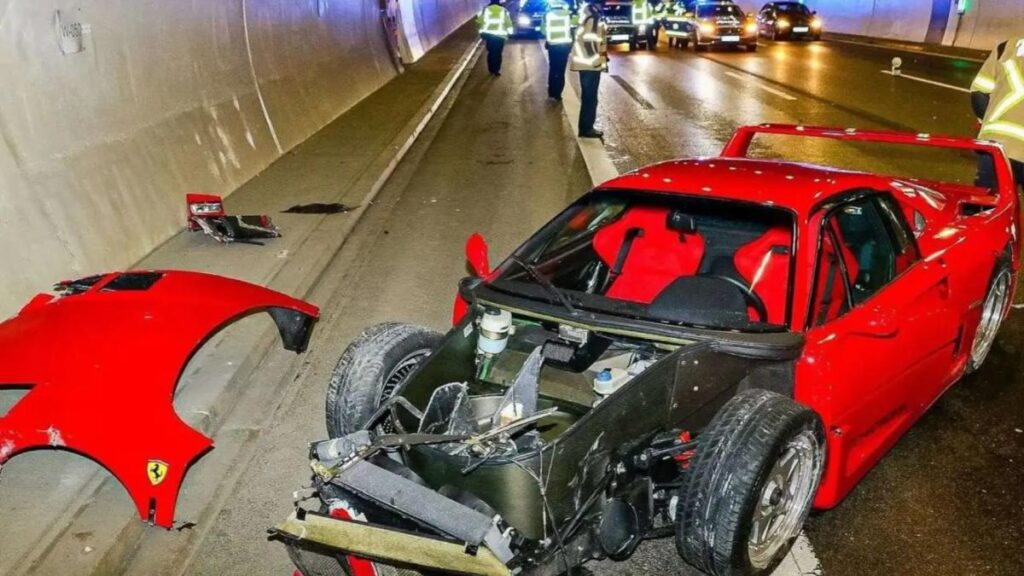In a shocking incident that has resonated across the automotive world, a 24-year-old dealership employee crashed a $2.5 million Ferrari F40 in Germany, an event that has ignited discussions about the difficulties associated with driving high-performance vehicles. The accident took place in a tunnel near Stuttgart when the driver reportedly lost control of the supercar, resulting in a collision with the tunnel’s wall. This highlights the challenges faced by drivers, particularly younger, less experienced ones, when handling cars that are well beyond standard performance capabilities. The gravity of the situation emphasizes the inherent risks of driving such powerful machines.
The Ferrari F40 is celebrated for its extraordinary performance and is one of the last models personally endorsed by automotive legend Enzo Ferrari. Featuring a 3.0-liter twin-turbo V8 that produces 471 horsepower alongside 426 lb-ft of torque, this supercar is known for its electrifying speed and exhilarating driving experience. However, it also presents significant challenges due to its notorious turbo lag, which can leave drivers unprepared for sudden bursts of acceleration. Given these characteristics, experts suggest that the young driver may have been taken aback by the unexpected surge in power, culminating in the regrettable crash.
Social media has extensively circulated images that reveal the extent of the damage to the Ferrari F40. The front end sustained severe damage, affecting components such as the front crash structure and the distinct Kevlar clamshell, while the main body appears largely intact. However, the misaligned wheels indicating possible suspension damage suggest that repairs will be extensive and costly. The exact state of the car’s interior remains unclear, but preliminary assessments point towards significant financial implications for restoring the vehicle to its former glory.
This incident begs critical questions regarding the judgment involved in permitting less experienced drivers to operate high-performance cars. It underscores the necessity of comprehensive driver training and a deep respect for the vehicle’s capabilities. Those who own or handle such iconic supercars hold not only significant financial responsibility but also a moral duty to ensure that only adequately trained individuals pilot them. As investigations into the incident continue, the automotive community is left to contemplate the broader implications for the future of classic supercars and the owner responsibilities that accompany them.
The dialogue emerging from this unfortunate event is multifaceted, touching on the balance between passion for driving and the skills required to manage high-powered vehicles. As car enthusiasts, there is a compelling allure to exotic cars like the Ferrari F40, but this incident highlights the fine line between admiration and recklessness. Enthusiasts and potential owners must grapple with the reality that engaging with such iconic machines necessitates not just a love for cars but a commitment to understanding their dynamics and handling peculiarities.
Ultimately, the crash of the Ferrari F40 serves as a poignant reminder of the dangers that accompany the operation of high-performance vehicles. In a landscape where speed and power are often glorified, it is essential to remember the responsibility that comes with wielding such capabilities. As the investigation unfolds, and as car enthusiasts absorb the ramifications of this incident, there lies an opportunity for growth in terms of awareness, training, and respect toward one of the most revered segments of automotive history.

